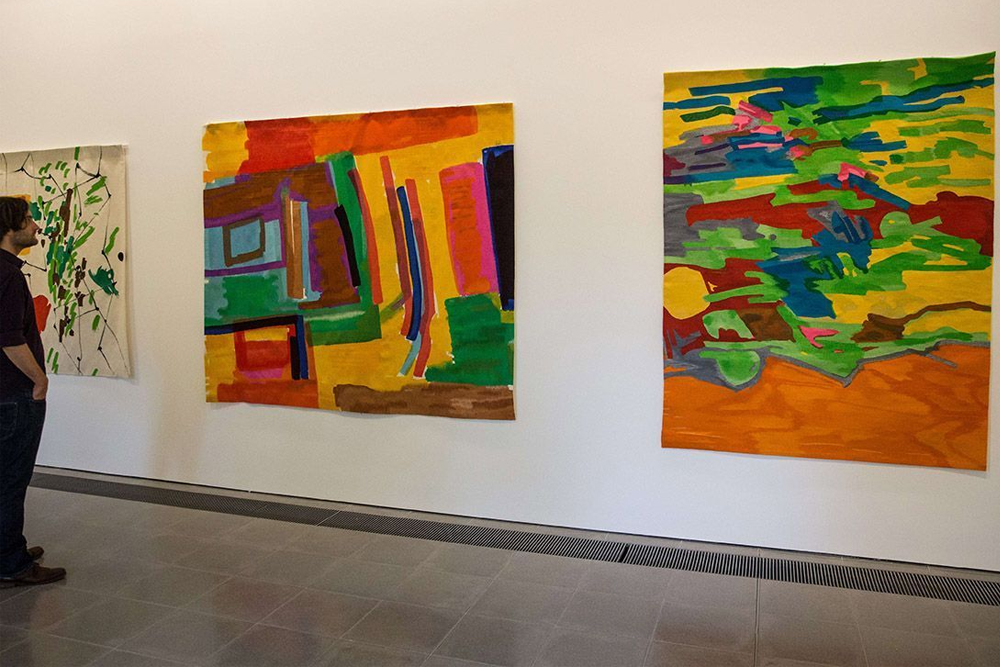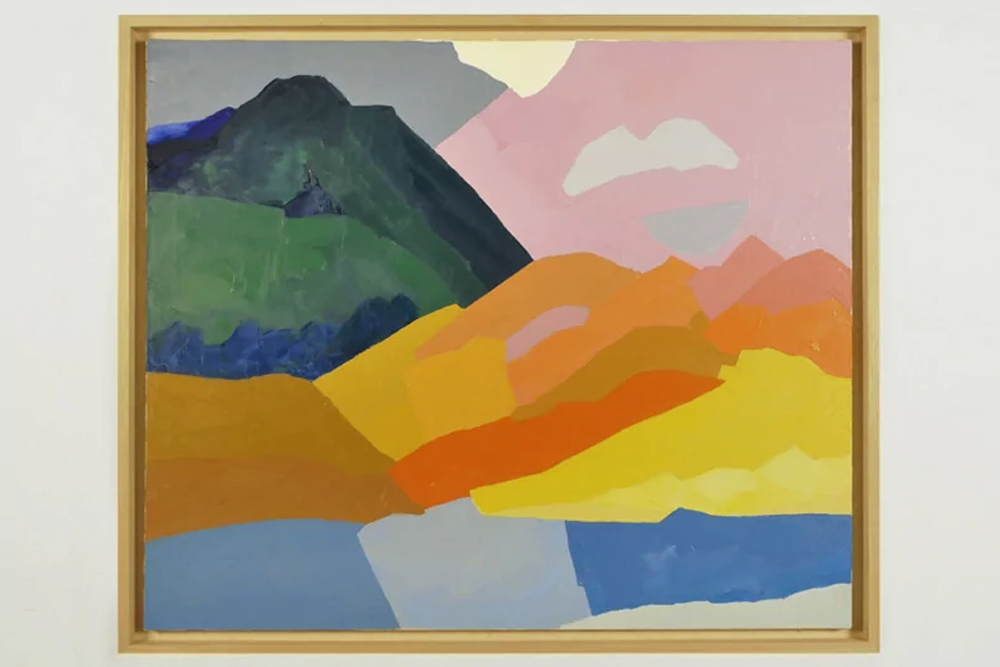Etel Adnan
Lebanese poet, novelist and abstract artist Etel Adnan (1925-2021) once said: “Abstract art was the equivalent of poetic expression; I didn’t need to use words, but colors and lines. I didn’t need to belong to a language-oriented culture but to an open form of expression.”

She was born in Beirut to a Greek Christian mother and a Muslim Syrian father. She grew up exposed to different languages and cultures. She studied philosophy at the American University of Beirut before continuing her studies in Paris. As a poet Adnan chooses to write about identity, condemning war, exile, politics, love and nature. She writes in a way that the reader can very much understand that what she is conveying is captured from experience and observation of her life. A famous novel of hers is called “Sitt Marie Rose”, a story that takes place before and during the Lebanese civil war of 1975-1990.
In most of her visual artworks Etel Adnan chooses to depict geometrical forms. She uses different tones of vivid yet soothing colors and a palette knife rather than a paint brush. Her depictions are mainly abstract landscapes, fields, sunsets and mountains. These factors are what makes up the quite distinctive aesthetic of Etel Adnan. She transcribes her art on different types of mediums and in some of her works she even merges her writing with paint. Etel Adnan has emerged as a prominent figure in contemporary art and literature due to her diverse and expansive artistic and literary career. Her distinct approach, which seamlessly intertwines poetry painting and activism made her an influential figure. Her work will forever resonate with audiences worldwide.

If you want to discover more about Female Artists of the MENA and Arab region, I highly recommend you go check out the Barjeel Art Foundation in Sharjah. Something worth mentioning is that like no other art institution, especially in the region, Barjeel makes sure female artists and their work have an equivalent ratio and presence as male artists and their work.
Don’t hesitate to check up the foundation’s online archive to find out more about the art of Female artists of the region.
https://www.barjeelartfoundation.org/